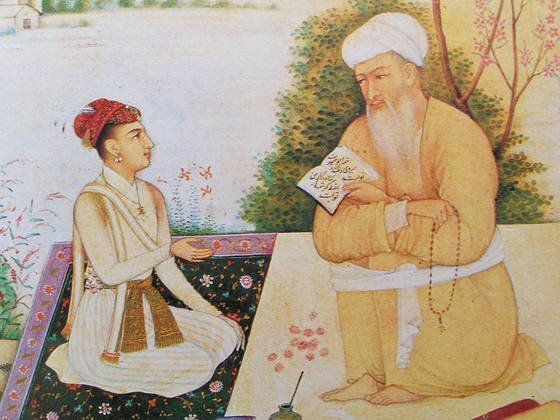For smooth Ad free experience
For smooth Ad free experience
Today, Indian classical music is practised and performed in two distinct styles – Hindustani and Carnatic. When did this split occur? What factors were responsible for it? How did Hindustani Music develop after the split?

Story of Hindustani Classical Music
The establishment of the Delhi Sultanate and the resultant cultural interactions between the people of northern and northwestern South Asia with those of Central Asia was the catalyst of the divergence of Indian classical music into two distinct traditions – Hindustani and Carnatic. As people in the northern and northwestern parts of the subcontinent – the areas where the Delhi Sultans were the most powerful – began interacting with the cultures of Central Asia, they came to know of new singing and compositional styles, new melodic arrangements, new rhythms, and new instruments. All of this played a significant role in shaping a musical tradition vastly different from that which was developing in the southern part of the country, a region that remained somewhat insulated from these cultural changes taking place, especially in the field of music.
This divergence was not an overnight phenomenon, however. Even as the establishment of the Sultanate began facilitating a large cultural exchange across different regions, some developments remained common across the Hindustani and Carnatic musical traditions. Key among them was the treatise titled Sangit Ratnakara, written by musicologist Sharngdeva while working in the court of the Yadava dynasty, located near the Ellora Caves. In his treatise, Sharngdeva laid down with meticulous detail the properties of 253 different ragas. Sharngdeva classified these ragas according to the permutations and combinations of svaras they used, their arrangement, the time of the day the ragas were supposed to be sung, and other important characteristics. The Sangitratnakara is treated as a significant text by both Carnatic and Hindustani traditions today and remains one of the most extensive and important pre-modern pieces of music literature on ragas.
The divergence between the Hindustani and Carnatic traditions reached its zenith during the time of Amir Khusro. A musician, poet, and literateur who enjoyed the patronage of seven different Delhi Sultans during his life, Khusro lived between 1253 and 1325. A disciple of the Sufi saint Hazrat Nizamuddin Auliya, Khusro today is remembered not only for his devotion towards the saint but also for his poetry, riddles, and his immense contributions to shaping Hindustani Music.
Key among Khusro’s contributions is his work in developing at least five new forms of music: qaul, qalbana, tarana, naqsh, and gul. Of these, naqsh and gul have today faded into obscurity, while qaul and qalbana make components and styles of qawwali singing. The tarana, meaning ‘song’ in Persian, is a form of singing in the Hindustani classical music tradition that is still practised today.
While performing a tarana, the singer sings an arrangement of a raga without any coherent lyrics. Instead of words, the singer is supposed to sing out sounds that would resemble rhythm instruments – such as the tabla. While historians acknowledge the existence of some earlier forms of singing in the subcontinent that also used the syllables of rhythm instruments instead of coherent lyrics, they highlight that Khusro was the first one to incorporate Persian terms and sounds in the genre. Those terms and sounds continue to be used while singing taranas today. They are also frequently used while singing tillanas, a similar style of singing in the Carnatic tradition.
Apart from these contributions, Amir Khusro is also credited with the invention of the sitar, as well as with the creation of the famous raga, Yaman. Additionally, he is at times also thought of as the inventor or creator of the tabla, as well as the inventor of the khayal style of singing. However, historical pieces of evidence available presently suggest that both the tabla and the khayal came into being much after Khusro’s death.
The fact that today many traditions believe Khusro to be the originator of the khayal and the inventor of the tabla points to his lasting legacy as a father figure in the history of Hindustani music. These creations attributed to him point to his raging popularity among the musical audience of the country even centuries after his death. His continued association with these later creations also point to a certain degree of deification that exists around his persona today.
Legend says that Khusro, to help propagate the styles of qaul and qalbana among future generations than his, had handpicked 12 faithful disciples. Those disciples learnt everything about music from him and then propagated it further to their disciples, and those disciples then spread it among their disciples, who today have kept his legacy alive. The descendants of Khusro’s students today make up the Qawwal Bachchon ka gharana, also known as the Delhi gharana. It is the oldest among the gharanas of Hindustani music that remain in continued practice to date.
0
You might be interested in reading more from
